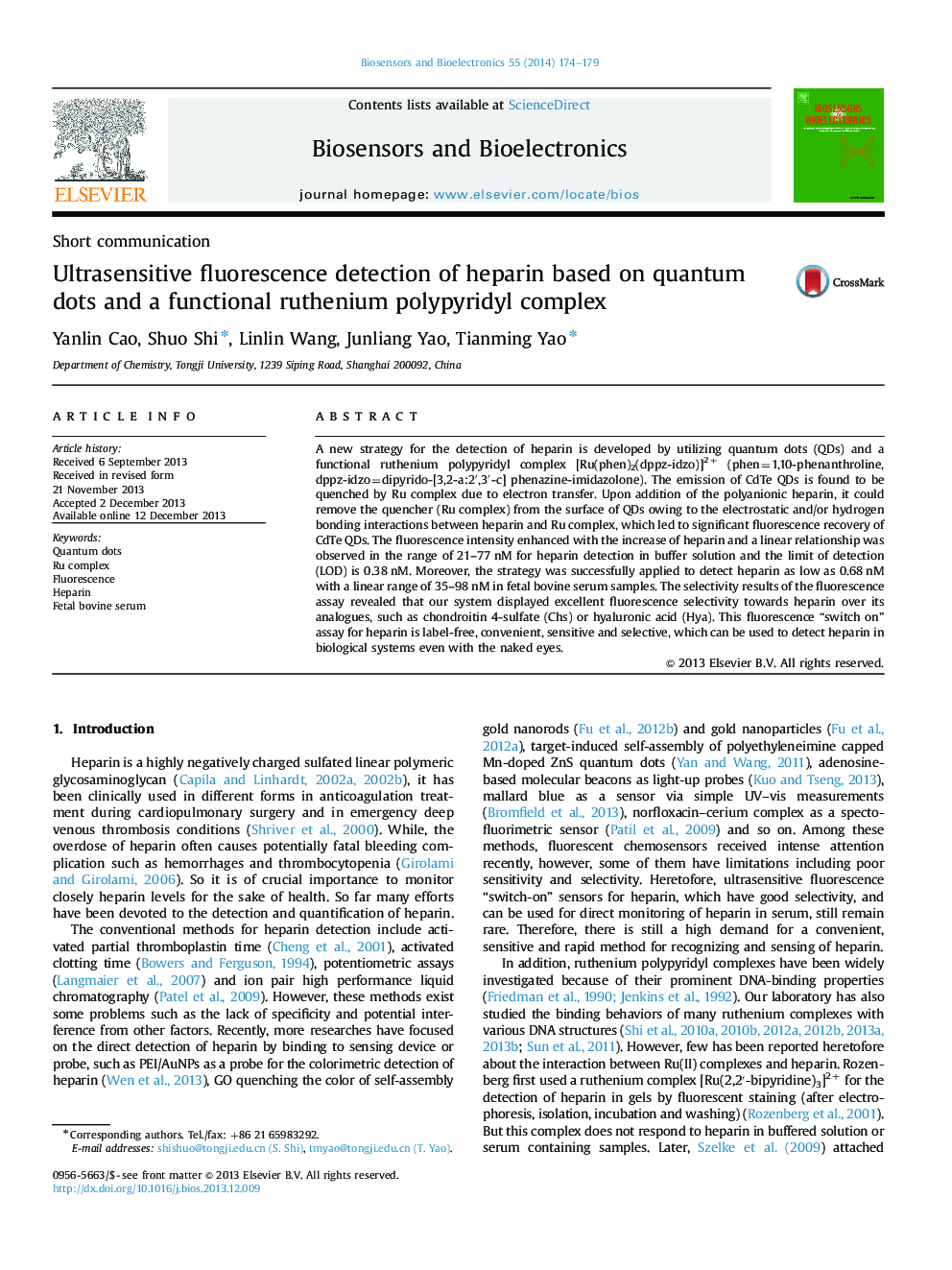| کد مقاله | کد نشریه | سال انتشار | مقاله انگلیسی | نسخه تمام متن |
|---|---|---|---|---|
| 866527 | 1470976 | 2014 | 6 صفحه PDF | دانلود رایگان |
• This work represents the first example for heparin detection based on QDs and complex.
• The limit of detection is much lower than any reported outcome and the sensitivity is higher.
• The selectivity could be visualized with the naked eye.
• Our assay is very convenient and can readily be used to detect heparin immediately without other treatments.
A new strategy for the detection of heparin is developed by utilizing quantum dots (QDs) and a functional ruthenium polypyridyl complex [Ru(phen)2(dppz-idzo)]2+ (phen=1,10-phenanthroline, dppz-idzo=dipyrido-[3,2-a:2',3'-c] phenazine-imidazolone). The emission of CdTe QDs is found to be quenched by Ru complex due to electron transfer. Upon addition of the polyanionic heparin, it could remove the quencher (Ru complex) from the surface of QDs owing to the electrostatic and/or hydrogen bonding interactions between heparin and Ru complex, which led to significant fluorescence recovery of CdTe QDs. The fluorescence intensity enhanced with the increase of heparin and a linear relationship was observed in the range of 21–77 nM for heparin detection in buffer solution and the limit of detection (LOD) is 0.38 nM. Moreover, the strategy was successfully applied to detect heparin as low as 0.68 nM with a linear range of 35–98 nM in fetal bovine serum samples. The selectivity results of the fluorescence assay revealed that our system displayed excellent fluorescence selectivity towards heparin over its analogues, such as chondroitin 4-sulfate (Chs) or hyaluronic acid (Hya). This fluorescence “switch on” assay for heparin is label-free, convenient, sensitive and selective, which can be used to detect heparin in biological systems even with the naked eyes.
Journal: Biosensors and Bioelectronics - Volume 55, 15 May 2014, Pages 174–179
